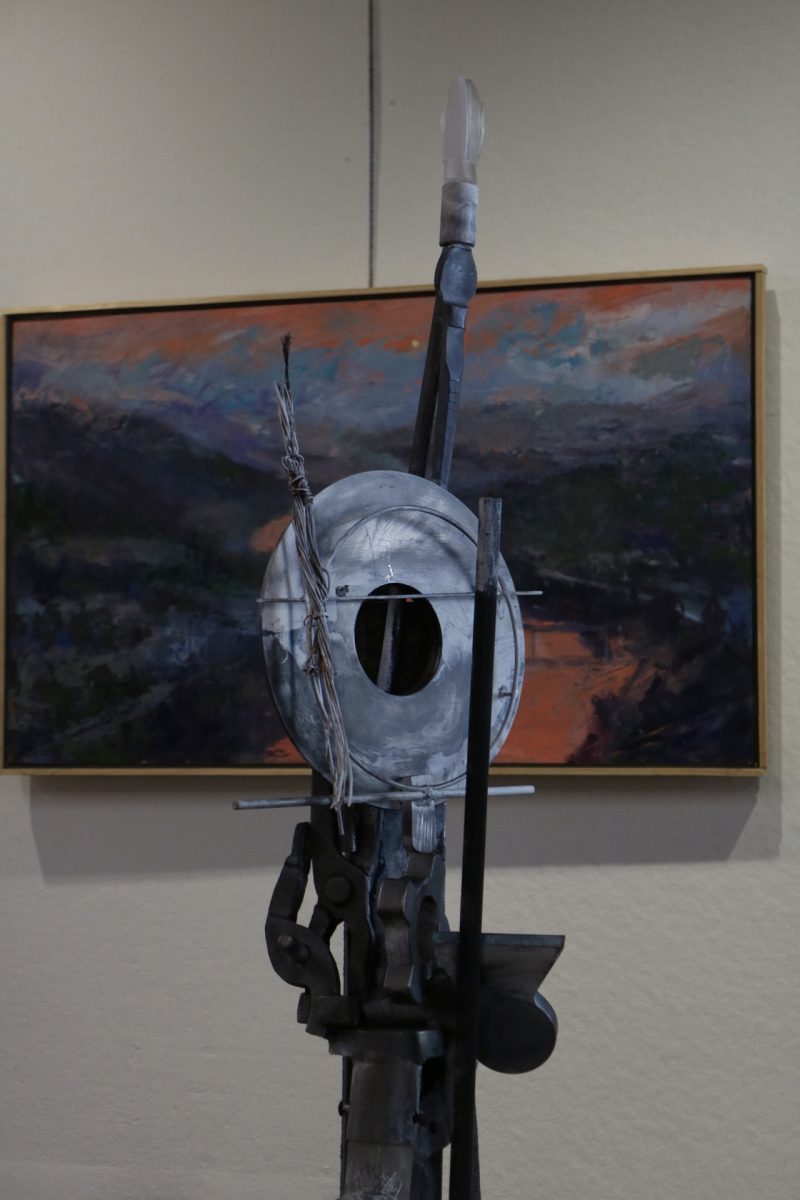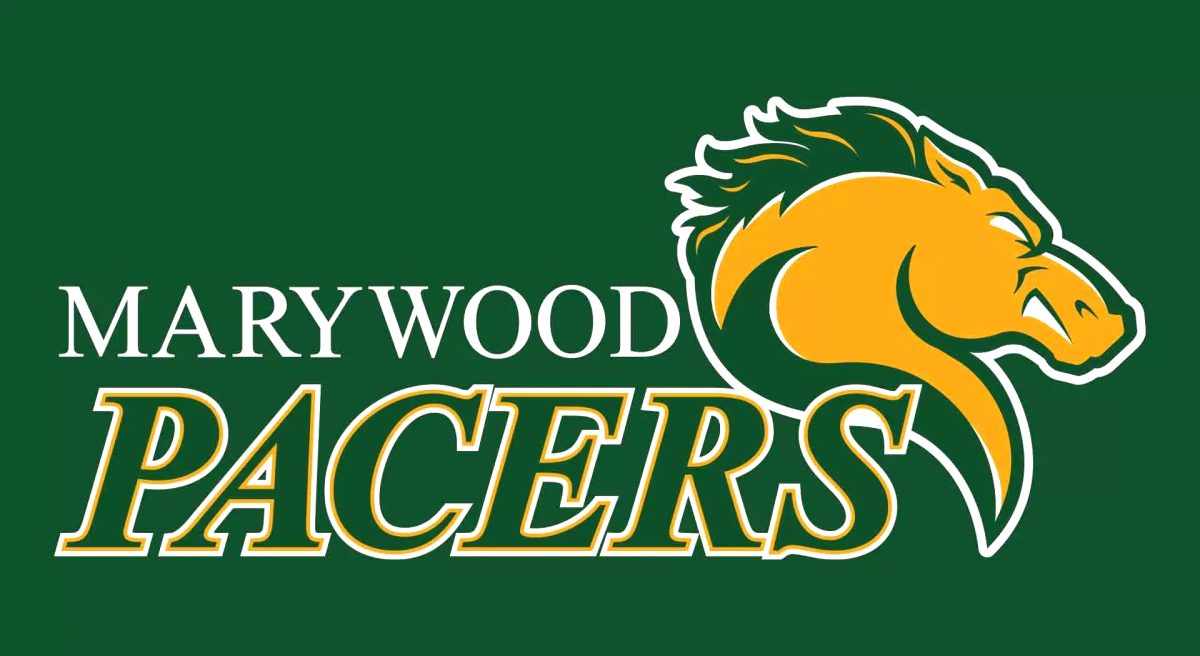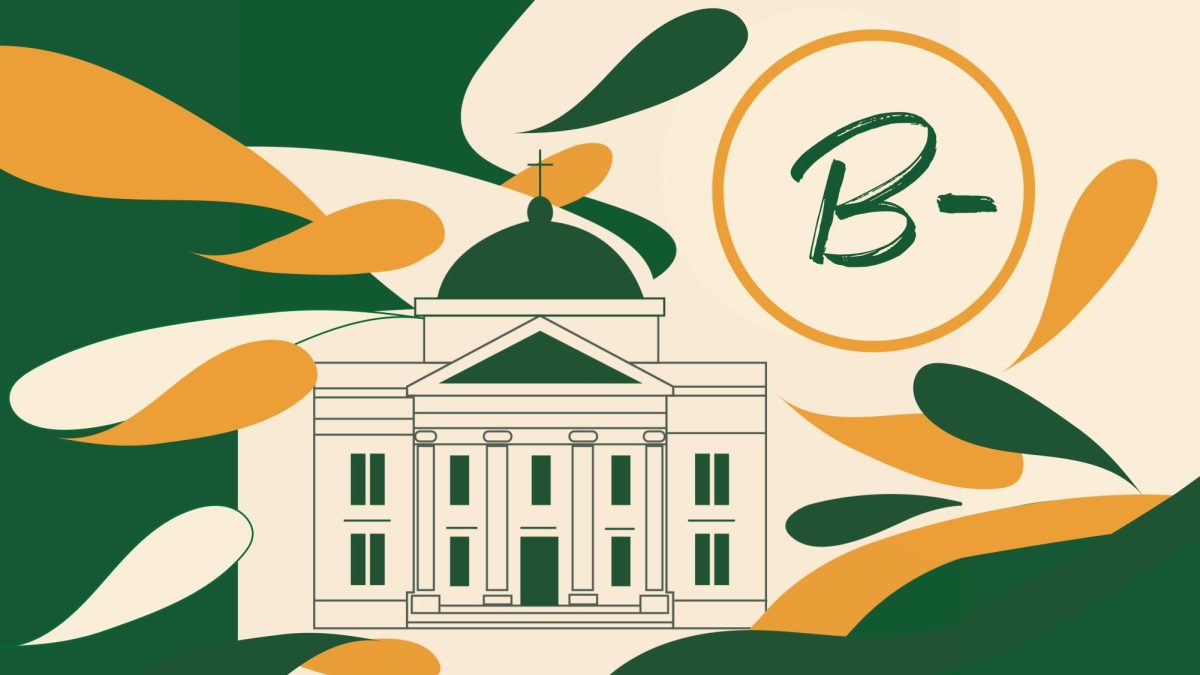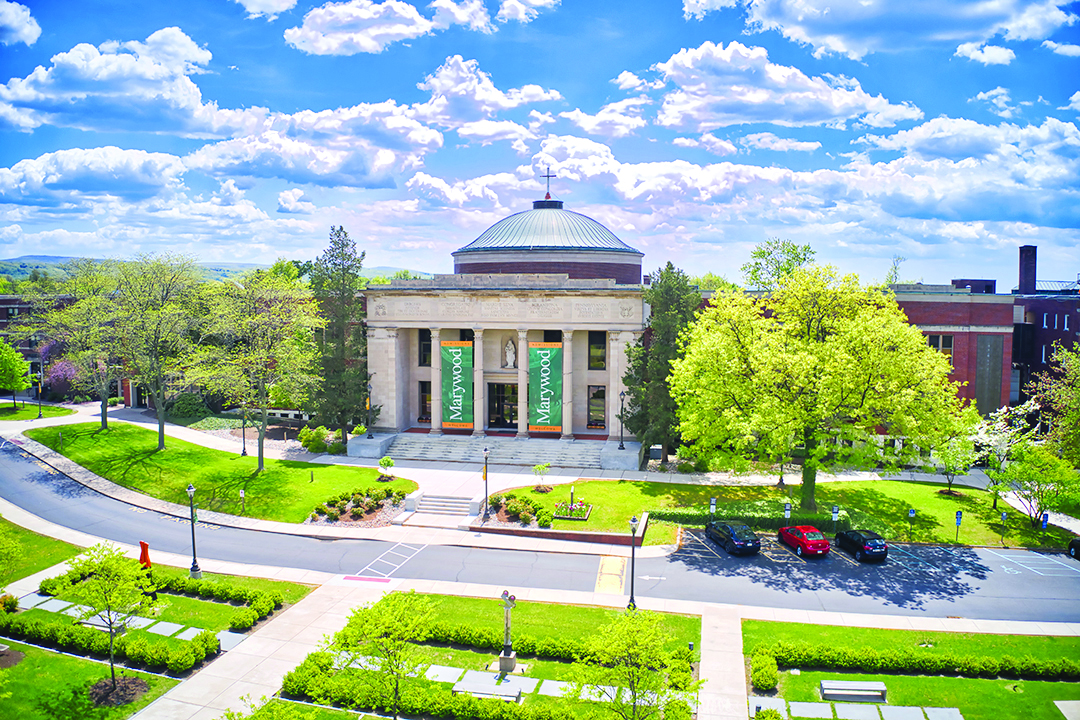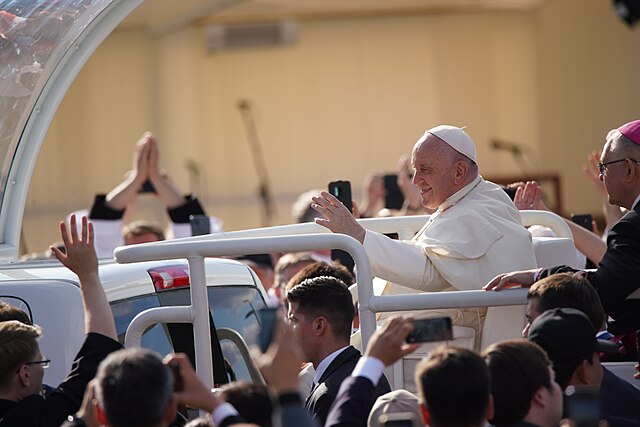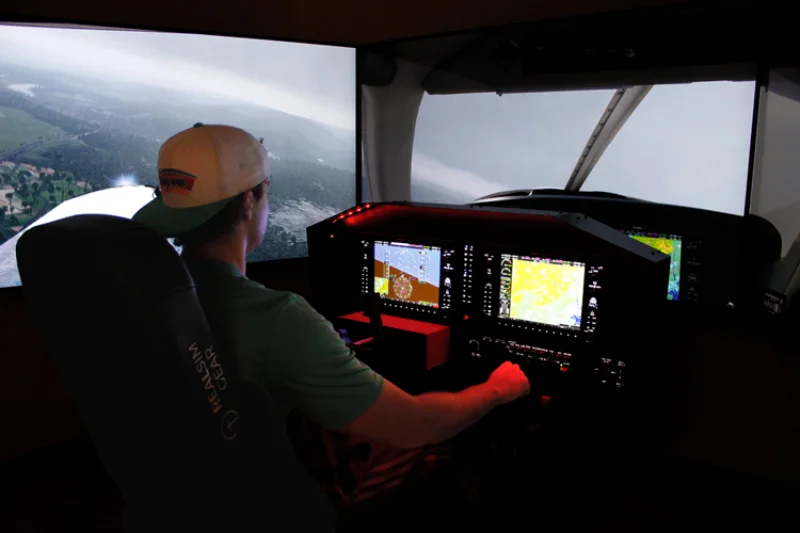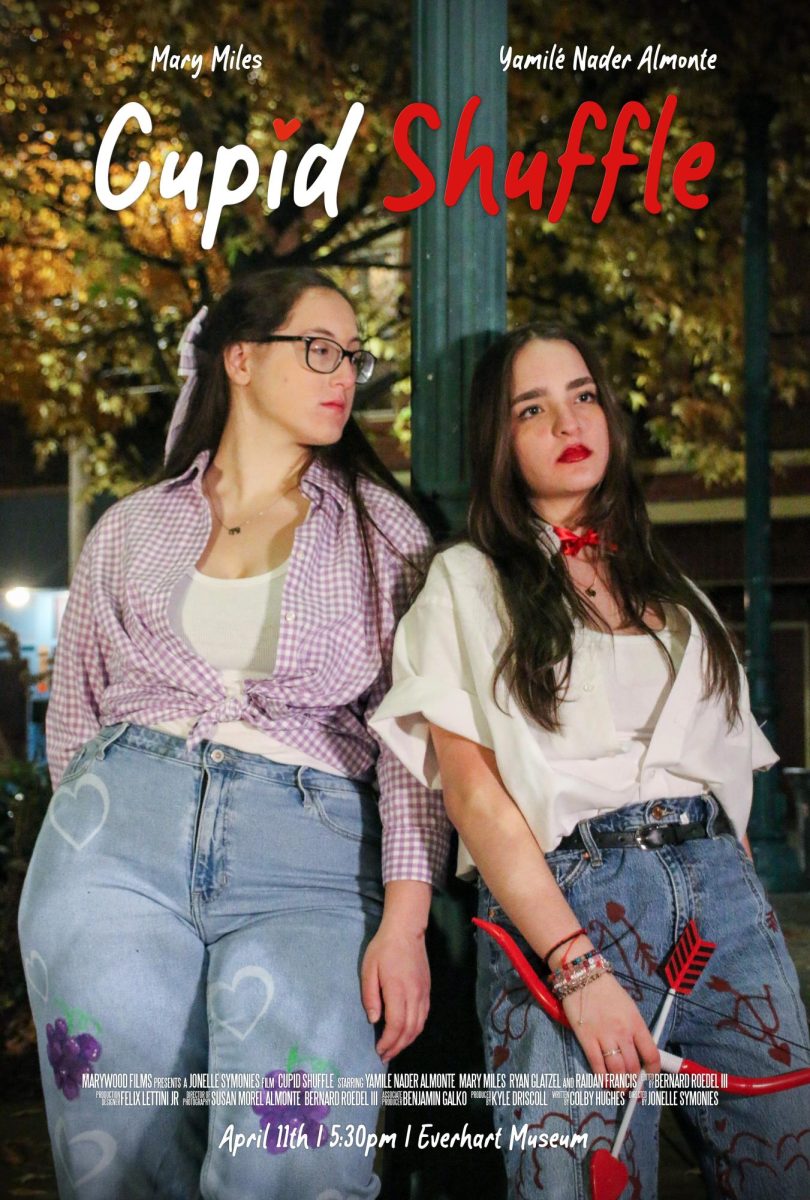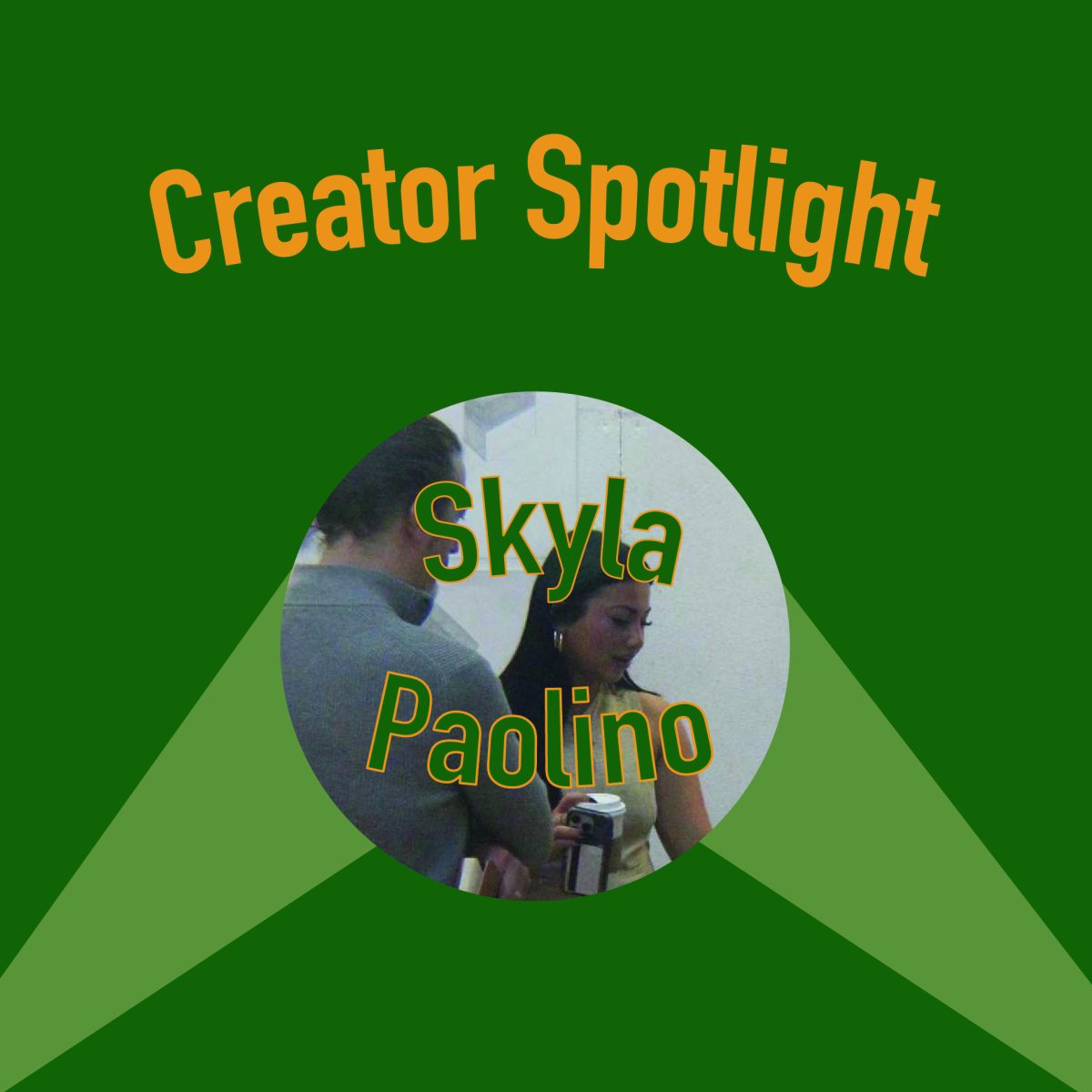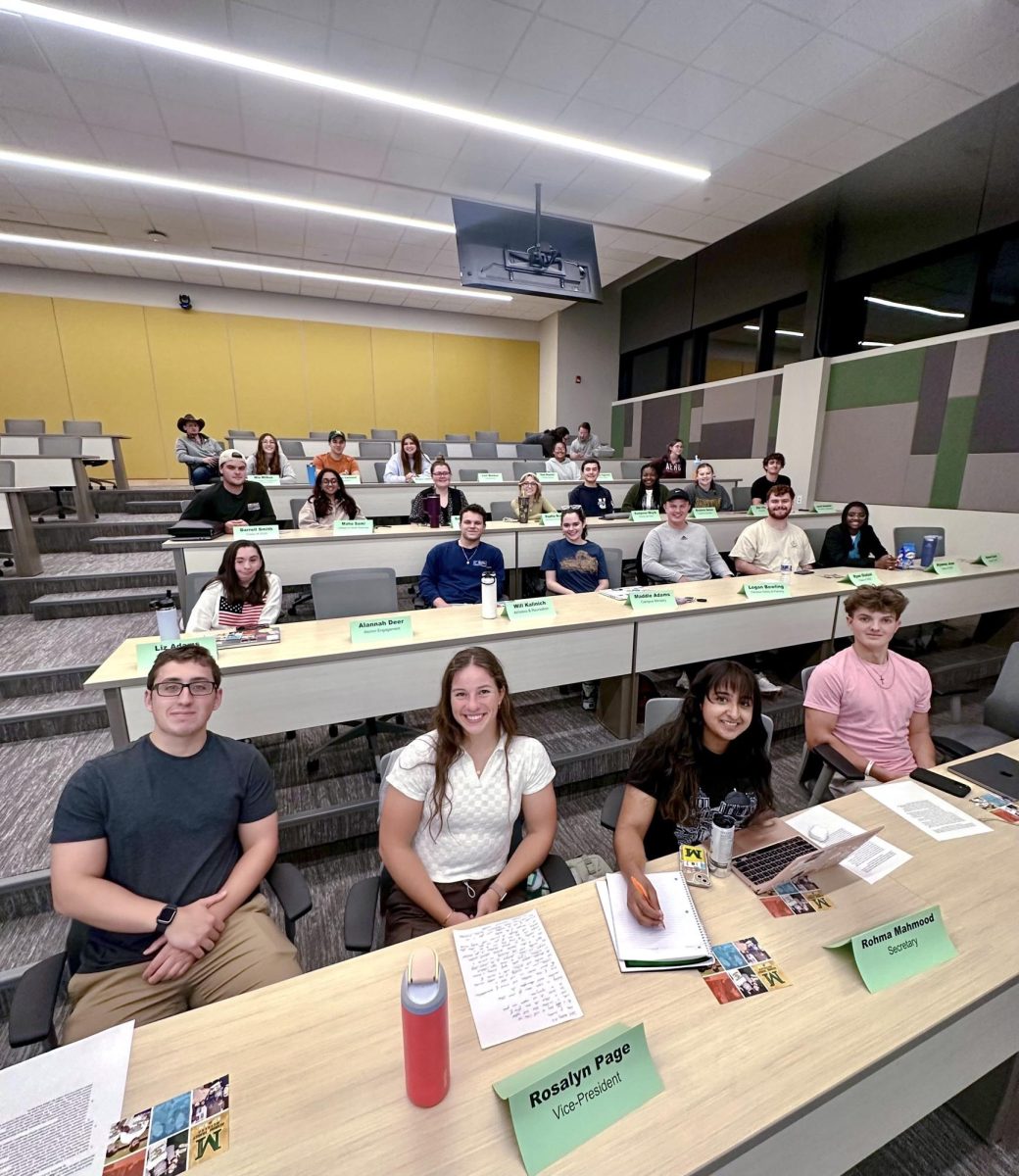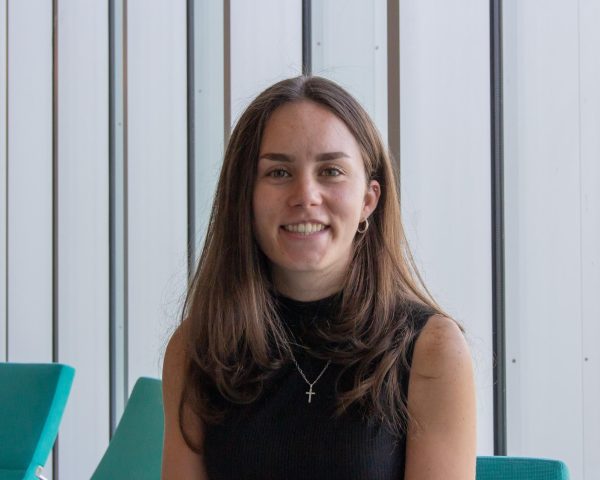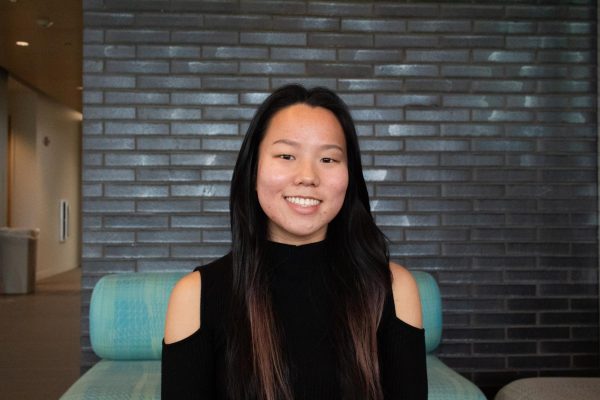Marywood’s 3D department held an open display of both faculty and student work on March 21. The exhibit showcased sculptures in an array of mediums, ceramics and paintings.
Students taking these studio arts classes have a variety of learning opportunities within the studio itself. For the foundry work, students learn how to handle, melt and pour metal and create the molds to be poured into. Students also have the opportunity to sandblast glass, adding a finishing touch to their ceramic pieces.
3D studio technician and long-time sculptor Stephen Colley noted his experience and how he hopes to translate that into the classroom.
“I used to have a handmade tile line, and I worked a lot with interior designers and architects, but that was a product that was not only an art form but was also functional for backsplashes, showers, etc.,” explained Colley.
“You can use this class to not only make sculptures but also things that’ll go around campus and parks. Those monuments are made here in front of students, so not only is it a project that’s going to be publicly seen but it’s also a teaching tool,” said Colley.
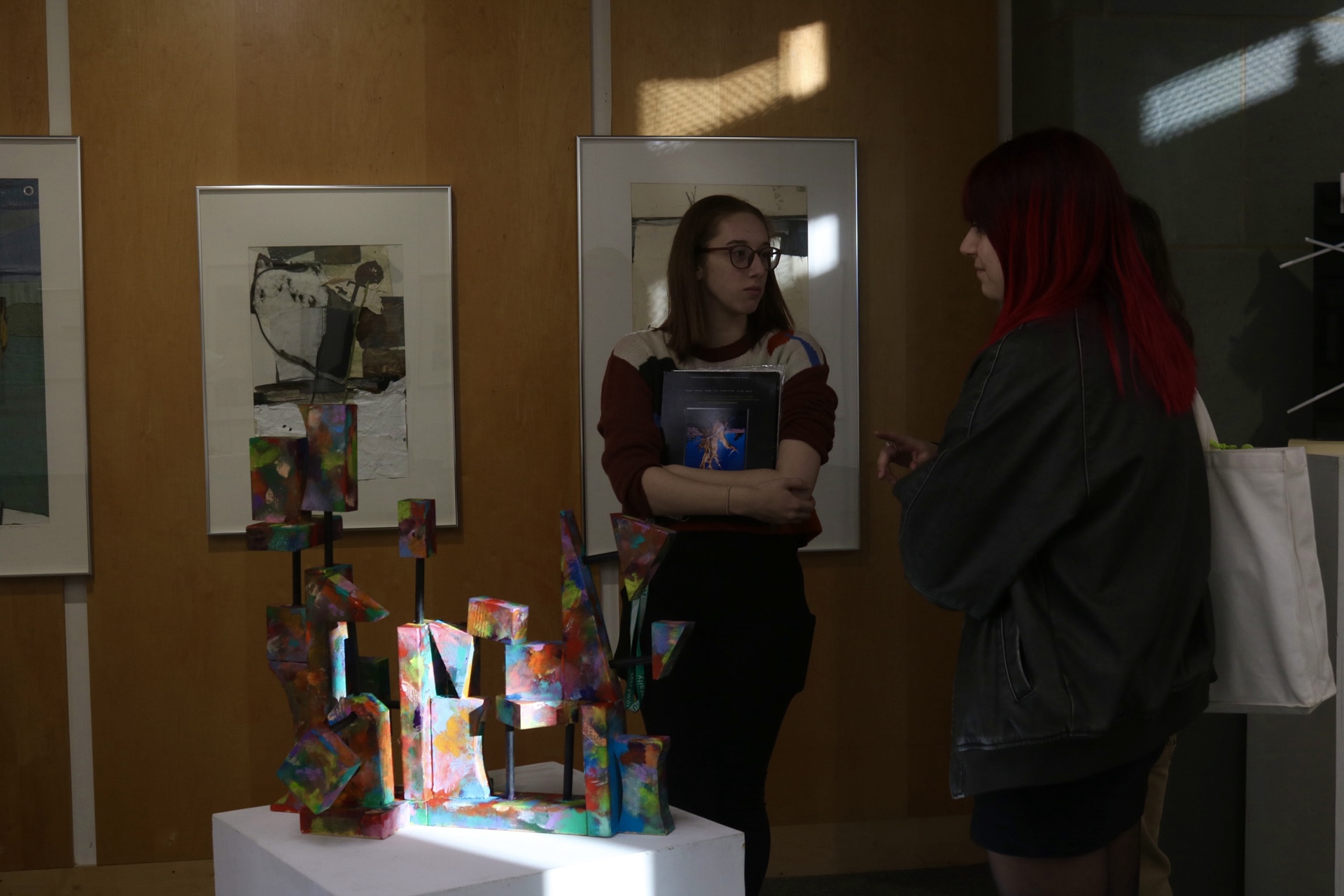
3D studio technician and professor Mark Chuck shared the importance of traditional art methods in a world of modern technology.
“Ninety-five percent of ceramics is traditional, just by virtue of the artform itself. Working with clay is a hands-on experience where artists express themselves and explore creative problem solving. While there are modern advancements, such as digital kilns and technology in manufacturing clay, the essence of ceramics remains rooted in traditional methods,” said Chuck.
However, of the emerging trends, Chuck is most excited about the use of image transfer, which is a technique rooted in printmaking.
“I’ve been successful using this technique in my own work, and I’ve incorporated it into my curriculum. This method enables students to transfer images onto a finished piece, resulting in unique and meaningful projects that showcase their individuality and creativity. It’s very popular among our ceramics students,” explained Chuck.

Students throughout Marywood are encouraged to take any of the 3D arts courses, whether they are in a fine art-related major or not.
“Most people take it as an elective. We definitely want majors to take it, but it’s a program that we want to [use to] enhance students in architecture and interior architecture. At least they’ll know how these things are made and created,” said Colley, referring to when buildings have to be furnished and decorated.
“Pottery teaches us a lot more than simply how to make something from clay. It teaches us how to be patient and persistent, accept and learn from our mistakes, find balance in everything we do, stay strong when things get tough, and practice mindfulness so we can focus on the task at hand,” said Chuck.
Studio courses taught by Stephen Colley and Mark Chuck for the upcoming Fall 2024 semester are as follows: Ceramics I, Ceramics II, Ceramics III and Ceramics IV.
Contact the writer: [email protected]



